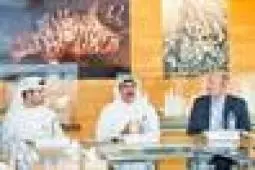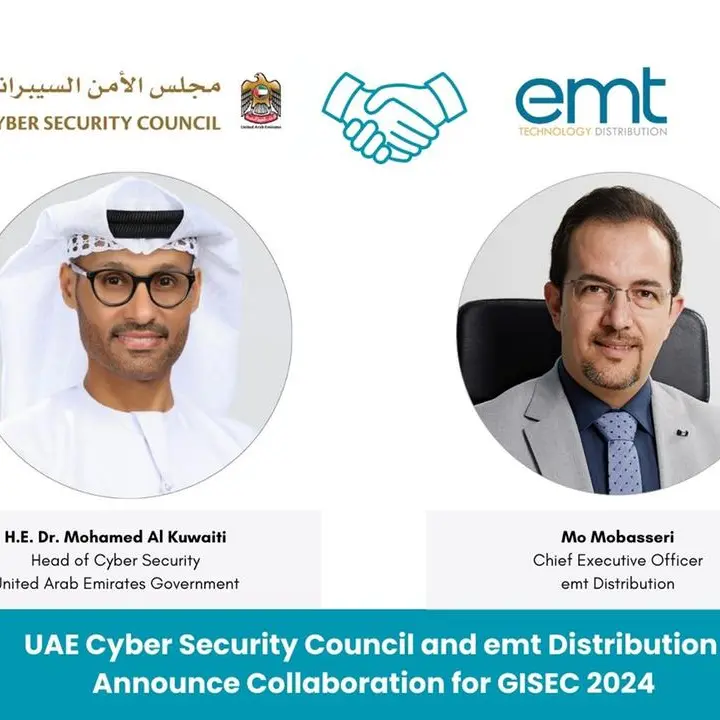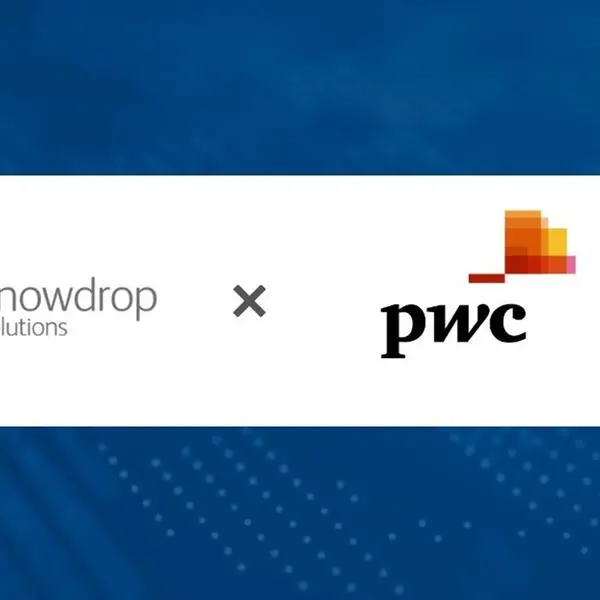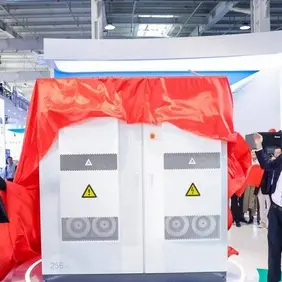PHOTO
HH Sheikh Maktoum bin Mohammed bin Rashid Al Maktoum: "The strategy reinforces our commitment and achievements to contribute to the sustainability of our national economic growth and prosperity"
•Aims to position the Centre among the top 10 financial centres globally
•Plans to domicile 1,000 financial firms in the next 10 years, in comparison to 362 in 2014
•Targets increasing combined workforce of Centre from 17,860 in 2014 to 50,000 by 2024
•Aims to align DIFC 2024 Strategy with Dubai Plan 2021 to strengthen Centre's position as a global hub for Islamic legislation and financial services
•Aims to support the financial services sector to contribute 18% to Dubai's GDPin the next10 years
Dubai - Dubai International Financial Centre (DIFC) is poised to grow three-fold over the next 10 years through the integration of a four-pronged strategy that includes deepening core client synergies, enhancing infrastructure, increasing the availability of skilled staff, and stepping up access to the South-South trade corridor.
His Highness Sheikh Maktoum bin Mohammed bin Rashid Al Maktoum, Deputy Ruler of Dubai and President of DIFC, underlinedthe ambitious plans of DIFC in expanding and reinforcing its position as an international financial hub, and said:"DIFC's ambitious 10-year strategy reflects a clear understanding of the future, inspired by the wisdom and insightful vision of the UAE's leadership. It consolidates theaccomplished successes of the past, and builds on the achievements, to live up to the aspiration of the UAE's people. This strategy will mark a new beginning and the initiation of an innovative phase, with a focus on opportunities that strengthen our nation's position as an important link and regional centre of significance, to create an impact on the world economic map.
His Highness noted that the experience and confidence gained by DIFC over the past decade qualifies the Centre today to offer new dimensions to the legislative, financial and investment ecosystem in order to sustain the growth and prosperity of the national economy, as well as local and international partners.
His Highness said: "In our strategy for the next 10 years, we look forward to stimulating and driving our collective aspirations to enter a new phase of leadership, in a way that puts us at the forefront of financial centres on the global landscape."
The announcement was made at a media briefing headlined by His Excellency Essa Kazim, Governor of DIFC.
The strategy outlines goals and opportunities that the centre aims to achieve in the next decade, through continuing to expand its physical and legislative infrastructure, to keep pace with targeted growth, and to ensure that DIFC ranks within the top 10 financial centres globally.
DIFC also aims through its 10-year strategy to align its goals and Dubai Plan 2021, to reinforce its position as an international centre for legislative and Islamic financial services.
Key highlights of DIFC's 2024 strategy include the following core areas:
Highlights
• DIFC expects to increase the number of active domiciled financial firms to 1,000 by 2024 in comparison to 362 in 2014.
• Align a broader human skill-base with the substantial development of infrastructure.The combined workforce of DIFC-registered companies is set to grow from 17,860 to 50,000 over the next decade.
• Consolidate net additional 5.5 million sq. ft. commercial office space, as against 2.5 million sq. ft. in 2014.
• To encourage robust best-practices, DIFC will further develop services and business capabilities that ensure the delivery of quality growth in the coming years.
• Overall assets under management of fund managers and financial institutions are expected to rise to an estimated US$250 billion by 2024, up from a total of US$10.4 billion in 2014.
• In addition, DIFC anticipates financial firms to strengthen their balance-sheet by an estimated value of US$400 billion, compared to US$65 billion in 2014, through enhancing liquidity to fuel future growth.
Addressing the media briefing, Essa Kazim, Governor of DIFC and Chairman of DIFC Authority, said: "The unwavering support of our clients has made DIFC a tremendous success story in the last decade. The number of registered firms climbed 18 per cent to 1,225, with 242 new companies licensed in 2014 alone. The total workforce at the financial hub as of 2014 stood at 17,860.
"Going forward, we aim to enhance our services and product offerings towards boosting business and establishing new benchmarks. In line with the Dubai Plan 2021, DIFC's strategy identifies the key engines of growth, focusing on new solutions and structural reforms. The Centre is critically important to the emirate's ability to finance growth and create jobs by attracting global investors."
He added: "Based on the fundamentals of sustainable and inclusive growth, DIFC has identified key goals towards drawing new financial services firms, expanding the presence of a skilled workforce, enhancing infrastructure to optimise occupancy, increasing assets under management, and strengthening our balance-sheet position to eventually cement our position as one of the leading financial centres globally.
"DIFC believes the implementation of these recommendations is crucial to boosting the growth of not only the financial centre, but also that of the UAE and the wider region."
The Ideal Market: Enhance physical, regulatory ecosystem
To enhance DIFC's real estate proposition, aggressive plans are underway to combine all plots together to form a pivotal retail project. With the design being finalised, the Centre aims to complete the project by Q2 of 2017.
Collectively, the financial district aims to align its goals with Dubai Plan 2021 to transform DIFC as a global financial services hub.
The Dubai Financial Services Authority (DFSA) in conjunction with DIFC Courts has evolved as the most transparent, secure, and professional regulatory and legal system in the region. Going forward, the Centre aims to bring domestic regulators on par with international standards, securing a leading position not just in the Middle Eastern region but on a global scale.
Bridge South-South Trade Corridor
The combination of strategic geographical location and developed air-sea links to access international trade routes has turned Dubai into an entry point and a major export and re-export hub. Trade among emerging economies is increasing rapidly with Africa, Latin America, South Asia and Middle East (South-South Corridor) witnessing dynamic growth.
The geo-economic development has led to the emergence of Dubai as a gateway to Middle East, South Asia and Africa, particularly for Asian and Middle Eastern companies.
Backed by its leading sphere of influence, services and expertise, DIFC estimates 50 per cent out of its overall future growth to come in from its strategic access to MEASA region, which possesses a combined GDP of US$7.9 trillion. The Centre places special focus on improving integration between Asian and Middle Eastern banks to upgrade regional trade and project finance, boosting asset managers' engagement across the wider region.
Deepen core strength
As DIFC builds capacity and expertise, the Centre aims to attract 30 per cent out of its overall future cumulative growth from existing clients that are looking to upgrade their licenses to higher categories, or expand their physical presence to become regional hubs.
Maintain an edge: Build value across key sectors
According to Global Islamic Economy Report 2014/2015, the Islamic finance market stands at US$1.66 trillion in assets with US$50.7 billion in funds.
DIFC aspires to integrate with Dubai Plan 2021 and the UAE government bodies to establish the Centre as a global Islamic regulation and financial services hub.
Towards this priority, DIFC aims to further support the development of Sharia-compliant products and services, securing a leading position not just in the Middle Eastern region but on a global scale.
An Ernst and Young report in 2013 identified that more than 80 per cent companies in the Middle East with assets amounting in excess of US$500 billion are family-owned. Given their vast footprints, these businesses have a strong role to play in the region's economic growth, investment landscape and in the creation of new job opportunities.
Small-to-medium enterprises (SMEs) segment constitutes 95 per cent of registered businesses in Dubai, contributes to 40 per cent of Dubai's GDP and accounts for 42 per cent of the total workforce, according to data made available by the UAE Ministry of Economy. Hence, there is a growing need to create an enabling environment for increasing the SME population- that is currently under-served by traditional banking services.
Moreover, A Price Waterhouse Cooper 2014 study unveiled that assets under management in the Middle East and Africa region are expected to rise to an estimated US$1.5 trillion by 2020, from a total of US$ 0.6 trillion in 2012 - representing a compound annual growth rate of approximately 12 per cent. In this context, there's certainly tremendous room for growth in the Asset Management sector.
Collectively, DIFC estimates to register 20 per cent out of its overall future growth in key sectors through offering structured financial solutions.
DIFC aims to facilitate the financial services sector to contribute an estimated 18 per cent to the emirate's GDP by 2024.
-Ends-
About Dubai International Financial Centre
The Dubai International Financial Centre (DIFC) is the financial hub for the Middle East, Africa and South Asia, providing a world-class platform connecting the region's markets with the economies of Europe, Asia and the Americas. It also facilitates the growth in South-South trade and investment. An onshore, international financial centre, DIFC provides a stable, mature and secure base for financial institutions to develop their wholesale businesses.
The Centre offers all the elements found in the world's most successful financial industry ecosystems, including an independent regulator, an independent judicial system with a common-law framework, a global financial exchange, inspiring architecture, powerful, enabling support services and a vibrant business community. The infrastructure within the district features ultra-modern office space, retail outlets, cafes and restaurants, art galleries, residential apartments, public green areas and hotels.
Located midway between the global financial centres of New York, London in the West and Singapore, Hong Kong in the East, DIFC (GMT +4) fills a vital time-zone gap with a workday that bridges the market and business hours of financial centres in both Asia and North America.
Currently, more than 1,225 active registered companies operate from the Centre, including 21 of the world's top 25 banks, 11 of the world's top 20 money managers, 7 of the top 10 insurance companies, and 9 of the top 10 law firms. Nearly 18,000 people work in the Centre.
DIFC continues to pursue expansion into new services and sectors within the Middle East, Africa and South Asia region, an area comprising over 72 countries with an approximate population of 2.8 billion and nominal GDP of US$ 6.9 trillion.
For further information, please visit our website: www.difc.ae, or follow us on Twitter @DIFC.
For media enquiries, please contact:
Sonali Rekhi
APCO Worldwide
Mobile: +971 55 6264896
Email: srekhi@apcoworldwide.com
© Press Release 2015











